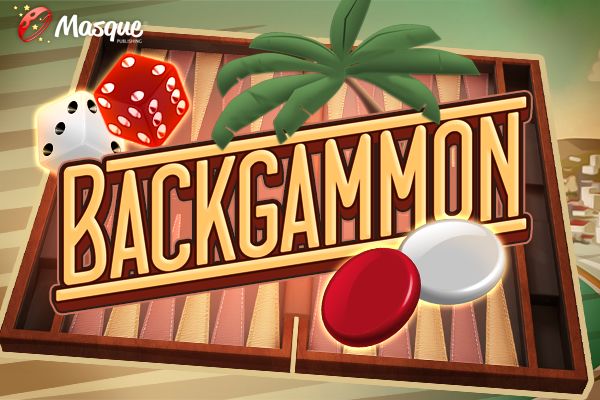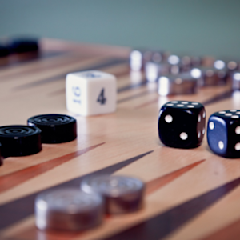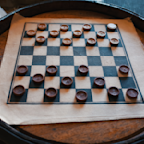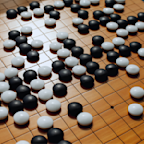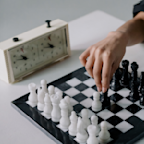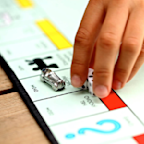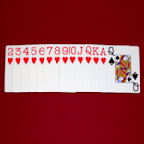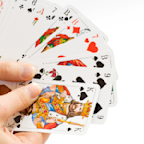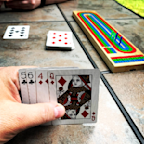Search results
Learn the rules and play backgammon online with other players or against the computer. Move your pieces around the board and bear them off before your opponent does.
- Lockup
Lockup Rules. Lockup is a brand new original game from...
- Yukon Solitaire
Hi. My name is Einar Egilsson and I created this online...
- Idiot
Play the classic card game Idiot online for free. No...
- YAHTZEE
Play YAHTZEE online for free. No download required. Play...
- Sea Battle
I've wanted to make this game for a while and finally got...
- Hearts
Play the classic card game Hearts online for free, against...
- Lockup
Enjoy backgammon games in five difficulties, from easy to expert, with options like doubling cube and highlights. Learn the rules, strategy and history of this ancient board game and have fun with 247 Backgammon.
Backgammon is a game said to originate from Persia over 5,000 years ago making it one of the oldest known board games. It is played by 2 opposing players with different colored pieces. The goal is to move your pieces to the correct part of the board then remove them from the board before your opponent. In this web game you must move the white ...
Enjoy this classic game of skill, strategy, and luck with AARP's online Backgammon. Challenge your mind and gaming ability and win up to 100 AARP Rewards Points every week.
- Overview
- Preparing to Play
- Moving Your Checkers
- Hitting and Entering
- Bearing Off Your Checkers
The fact that people have been playing Backgammon for over
is proof enough that it’s really fun. It's actually one of the oldest board games! The game looks complicated at first, but it’s surprisingly easy once you get the hang of it. Read on to learn everything you need to know about playing Backgammon, like how to set up the game, the rules of play, and how
Backgammon is played on a board that consists of 24 narrow triangles that are called points. The triangles alternate in color and are grouped into four quadrants of six triangles each. There are four types of quadrants: the player's home board and outer board, and the opponent's home board and outer board. The intersection of these four quadrants, the middle of the board, is separated by a ridge called the bar.
The players sit facing each other at opposite sides of the board when they play. Each player's home board is positioned on the right quadrant closest to the player. The home boards are opposite each other, and so are the outer boards, which are located in the left quadrant.
Use a dice tumbler to roll two six-sided dice once during each of your turns. The numbers rolled represent two separate moves. For example, if you roll a 3 and a 5, you can move one checker three spaces and another checker 5 spaces. Or, you can move one checker 3 spaces and then 5 more spaces.
Make sure that you roll the dice to the right of your side of the board, from a reasonable height so that they bounce and roll a bit.
If either of the dice lands on a checker, outside of the board, or leaning against the edge of the board, then it is not considered valid and you will have to reroll.
Move your checkers to an open point.
Hit a blot to move your opponent's checkers to the bar.
, a point occupied by just one of your opponent's checkers, then the opponent's checkers will be placed on the bar. You should try to hit the blots whenever possible, as long as it helps you move your pieces as close to your home court as possible. This is a great way to slow down your opponent.
Any time a player's checker is on the bar, he can't move his other checkers until he gets the bar checker back on the home board.
Enter your pieces when they are taken out.
If a player hits a blot with one of your pieces on it, then you have to place your own checker on your bar. Your task is now to move that checker back onto the opposing home board. You can do this by rolling the dice and then moving the checker onto an open point on your opponent's home board, if you roll an open number. If you do not roll an open number, then you lose your turn and you will have to try again on your next turn.
For example, if you roll a 2, you can enter your piece on the 23 mark on your opponent's home court, provided that it's open. This is because you're moving your checker two points over from the bar.
Understand how to win the game.
To win the game, you need to be the first one to bear off, or remove, all of your checkers from the board and into your tray. To bear off your checkers, you need to roll both dice and use the numbers to move pieces into the tray. The numbers you roll must be exact or higher than the number of spaces needed to remove each piece from the board.
For example, if you roll a 6-2, you can bear off two pieces that are on these points. But if you do not have a checker on the 6 point, you can bear it off from the next highest point on your board, such as the 5th or 4th point.
Move all of your checkers into your home court.
You can only start bearing off your checkers once they are all in your home court. To begin bearing off, get all of your checkers into the 1-6 points on your board. They can be placed on any of these points. Don't forget that your checkers are still vulnerable when they're in your own home court.
If the opposing player has a checker on the bar, then he can still enter it into a blot on your court if you have any, forcing you to take out one of your pieces and move it to the bar. After that, you can't continue bearing off until it's back in the home court.
Backgammon is a two-player board game played with counters and dice on tables boards. It is the most widespread Western member of the large family of tables games, whose ancestors date back nearly 5,000 years to the regions of Mesopotamia and Persia.
People also ask
How do you win backgammon?
What is the history of backgammon?
How many people can play backgammon?
Jun 30, 2021 · Enjoy a free online backgammon game with simple and clear rules. Learn how to move your checkers, roll the dice, bear off, and avoid being backgammoned or gammoned.
